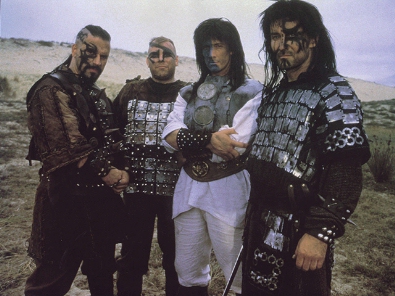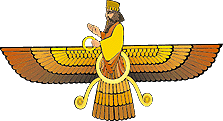


The majority of secret societies have religous roots.

Mesopotamian literature tells of the descent of the goddess Ishtar to the underworld through it's seven gates. There she is sprinkled with the water of life and can then ascend back throgh the seven gates to rejoin the world of men. In this and other stories it becomes obvious that no matter how far back you go, the belief in survival cannot have been weak.
Christian religons are largly divided on the subject of immortality, as it pertains to the resurection of the body. St. Paul made it clear his belief in the resurection of both the just and unjust alike. While Theophilus of Antioch supported the notion that God made man neither mortal or immortal, but indifferent. If a man lived a good life he would become immortal, if he did not he was condemned to mortality. Christian beliefs in the reconstruction of the body were shocking to the Greeks who argued that immortality came through getting rid of the body. It is universaly accepted though, that the soul will continue after death.

"1 And I saw when the Lamb opened
one of the seals, and I heard, as it
were the noise of thunder, one of the
four beasts saying, Come and see.
"2 And I saw and behold a white (white is a symbol of purity)
horse: (the horse is a symbol of conquest) and he that sat on him had a
bow; and a crown(symbol of victory) was given unto
him:and he went forth conquering,
and to conquer.(suggests a period when righteousness is on the offensive)
"3 And when he had opened the
second seal, I heard the second
beast say, Come and see.
"4 And there went out another horse
that was red: (red is the symbol of blood) and power was given to
him that sat there on to take peace
from the earth, and that they should
kill one another(international and civil strife): and that there was given
unto him a great sword. (Indicates a time of great war: organized warfare and the objective of genocide)
"5 And when he had open the
third seal, I heard the third beast
say, Come and see. And I beheld,
and low a black (black is symbolic of death) horse; and he that sat
on him had a pair of balances in his hand.
"6 And I heard a voice in the midst
of the four beasts say, A measure of
wheat for a penny, and three measures
of barley for a penny; and see
thou hurt not the oil and the wine. (Famine seems to characterize this period)
"7 And when he had opened the
forth seal, I heard the voice of the
fourth beast say, Come and see.
"8 And I looked and behold a pale(a sickly green)
horse: and his name that sat on him
was Death, and Hell followed with
him. And power was given unto
them over the fourth part of the
earth(note that death and hell had no power of their
own and even what they were given was limited), to kill with sword, and with
hunger, and with death, and with
the beasts of the earth."
-Revelation 6: 1-8
Although the Four Horsemen are a parable, they obviosly spring from many deep seeded fears and cultural beliefs.
Note the escalation of death and destruction through revelations. After Righteousness rides, comes War, then
Famine, followed by Death and Destruction. Violence in ever-greater circles.

Zoroastianisim is generally held to be a classic form of religous dualisim, or in other words it holds that the
universe is not the creation of one God, but of two, a holy power and an evil one. The basic dualisim is between
the Truth and the Lie: which are essentisaly two principles that exist in opposition to each other. The Lie seems to
have no origin, but the Truth however, is seen as the aspect of Ahura Mazdah, the twin brother of Ahriman, also
known as the One True God. Both Arhiman and Ahura Mazdah are the sons of the 'Father', or Zurvan. The myth
says that Zurvan existed before there was anything else. He offered sacrifices so that he might have a son, but
soon began to doubt. Ahura Mazdah was born of Zurvan's faith, and Arihman of his doubt. Later the myth of
primordial twins was rejected and the universe was neatly divided into two halves, good and evil. By the time
Zoroastrianism became the offical religon of the Persian Empire, Ahriman and Ahura Mazdah had grown in
stature, no longer two balancing forces of the universe, but independent monarchs who held undisputed sway in
their respective kingdoms.
For every good deed Ahura Mazdah does, Arhiman counters with a mirror-image evil deed. Among other things
Ahriman caused man's original language to be split into 30 different tongues, fatally poisoned the first man,
Gayomart. And when Ahura Mazdah made the stars his brother countered by making the planets, whose harmeful
astrological influences plauged the earth.
Zarathustra Description of origin, symbolism, and development